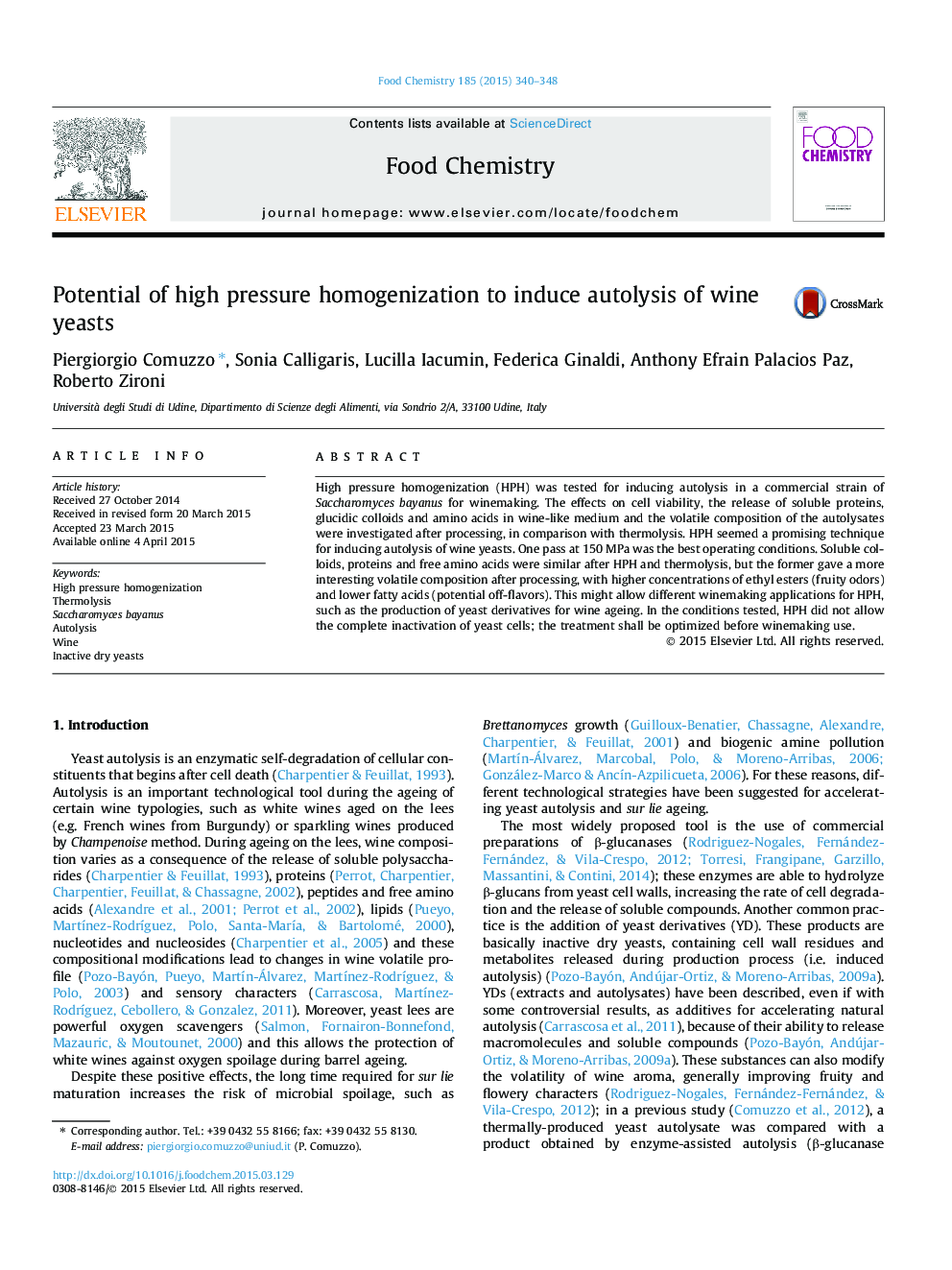| Article ID | Journal | Published Year | Pages | File Type |
|---|---|---|---|---|
| 7591673 | Food Chemistry | 2015 | 9 Pages |
Abstract
High pressure homogenization (HPH) was tested for inducing autolysis in a commercial strain of Saccharomyces bayanus for winemaking. The effects on cell viability, the release of soluble proteins, glucidic colloids and amino acids in wine-like medium and the volatile composition of the autolysates were investigated after processing, in comparison with thermolysis. HPH seemed a promising technique for inducing autolysis of wine yeasts. One pass at 150Â MPa was the best operating conditions. Soluble colloids, proteins and free amino acids were similar after HPH and thermolysis, but the former gave a more interesting volatile composition after processing, with higher concentrations of ethyl esters (fruity odors) and lower fatty acids (potential off-flavors). This might allow different winemaking applications for HPH, such as the production of yeast derivatives for wine ageing. In the conditions tested, HPH did not allow the complete inactivation of yeast cells; the treatment shall be optimized before winemaking use.
Related Topics
Physical Sciences and Engineering
Chemistry
Analytical Chemistry
Authors
Piergiorgio Comuzzo, Sonia Calligaris, Lucilla Iacumin, Federica Ginaldi, Anthony Efrain Palacios Paz, Roberto Zironi,
